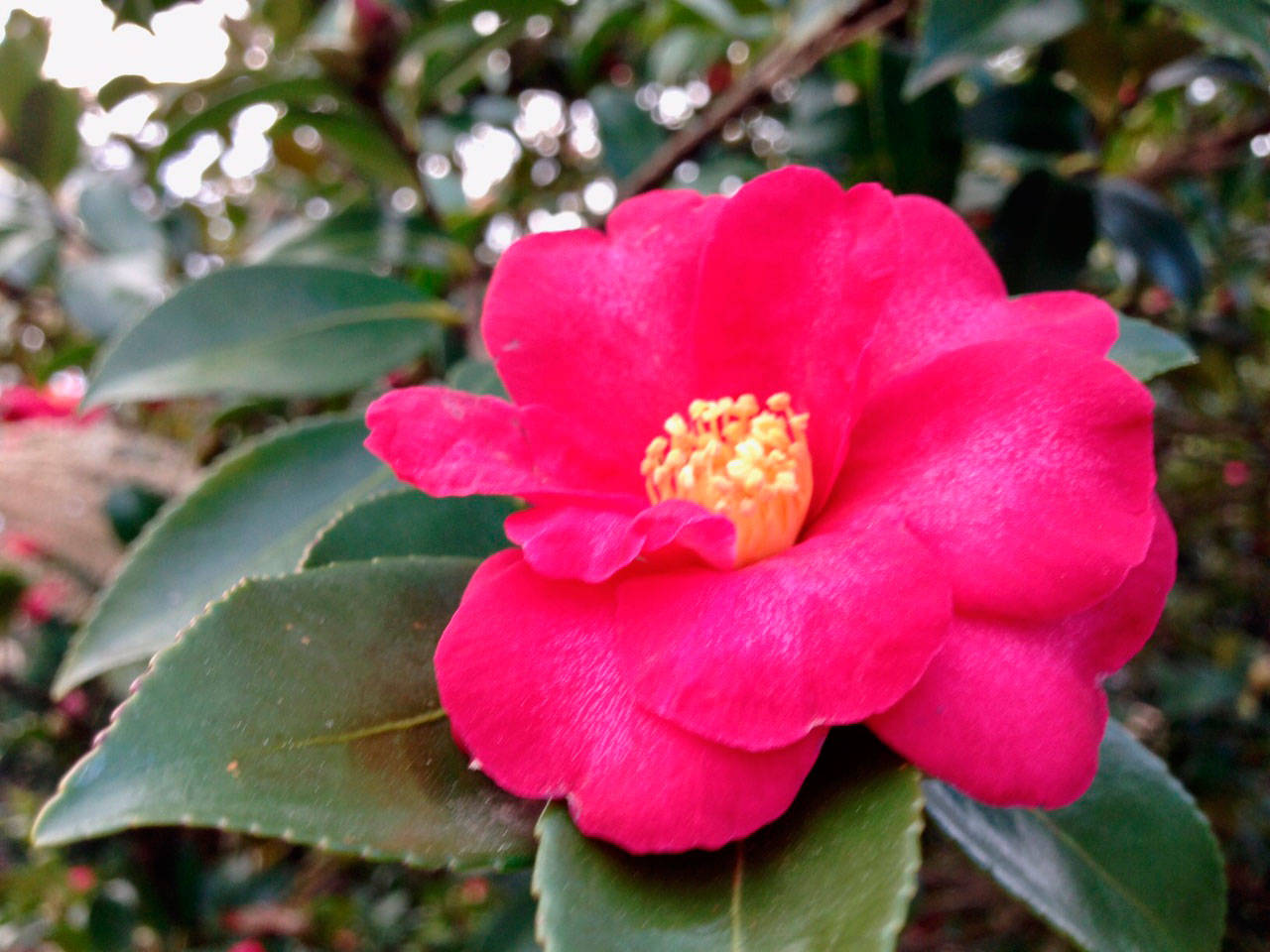Fall is the perfect time to look for and plant a camellia. The dark green, shiny, evergreen foliage alone is a beautiful addition to our landscapes. During late winter to early spring, we are rewarded with a fantastic floral display.
The traditional camellia, Camellia japonica, is the most prominent of the camellia species. The flowers range in color from pure white to all shades of pink to the deepest red. The form or shape of the flower can range from single to peony-like to formal double and the flower size from a couple of inches up to 6-7 inches.
Success with camellias depends on the planting site. Camellias prefer about four to six hours of direct sun with shade in the afternoon. They thrive in the light shade cast by tall pine trees, but would not do well in the heavy shade under a large oak.
Good drainage also is essential. Do not plant camellias in areas that are poorly drained or where water settles after a rain. Plant camellias on mounds or in raised beds if drainage is a problem.
Camellias are acid-loving plants, and an alkaline soil (pH above 7) can limit their ability to obtain some nutrients, especially iron. The top of the root ball should be even with or slightly above the soil level of the planting area.
Apply mulch several inches thick around the newly planted camellia. The mulch will help maintain moisture and prevent the growth of weeds, but it should be pulled back slightly from the base of the plant’s trunk.
Feed camellias in the spring as new growth begins – about March or early April. Use an all-purpose fertilizer labeled for acid-loving plants according to label directions. Although excellent drainage is necessary, camellias need adequate water especially during hot, dry spells during the summer, particularly in the first year after planting.
As beautiful as they are in the ground, camellias adapt happily to life in containers, allowing you to cultivate them where ground space is not available, such as on a balcony, deck or patio. It also allows you to move the plant around to different locations – bringing it to a prominent position while its flowers are at their best and placing it in a more out-of-the-way spot at other times.
Aphids and scale are the most serious pests of camellias; these insects feed primarily on the leaves and twigs. Infested plants have poor vigor and will not bloom well. Heavy aphid and/or scale infestations can cause plants to become yellowish and wilted in appearance, and can lead to the buildup of sooty mold fungus.
Root rot is the most common disease of camellias. It usually occurs in areas where the soil is too wet, especially in containers. Consult a Master Gardener for recommendations regarding all of these problems.
Camellias will brighten your late winter landscape, so consider planting one in your yard this fall.
Bill Wrobel is a certified WSU Clallam County Master Gardener.


